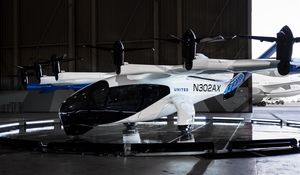Enables buses to maximize safety, maintain schedules and improve the flow of traffic
Applied Information today announced the launch of the next generation of its Glance® Transit Signal Priority system that supports near‑side bus stops—locations where buses stop before they cross an intersection. The announcement was made during the “Technology for Transit Reliability” panel at the ITS Canada GTHA Summit, hosted at York University.
Transit Signal Priority (TSP) helps buses get through traffic signals more efficiently by holding green lights or shortening red ones when a bus is approaching. Until now, most systems worked best for far‑side stops, where buses stop after passing through an intersection. However, many transit agencies prefer near‑side stops because they give drivers better visibility and reduce the need for passengers to cross in front of traffic. However, these safer configurations make it harder for signal systems to give the bus priority effectively.1
Applied Information’s new system addresses this challenge. It uses live data about the bus’s location and timing to help traffic signals make smarter decisions, both advancing and delaying light changes as required until the bus finishes boarding and is ready to move through the intersection.
“Near‑side stops have long posed a challenge for traditional signal priority systems,” said Bryan Mulligan, President of Applied Information. “This update gives transit agencies a practical way to improve service and safety at the stops they already use, without having to move infrastructure or change routes.”
The updated Glance system can be added to existing traffic signals and is already being piloted in several cities. Early results show improvements in on-time performance and shorter delays at intersections.
The launch supports broader efforts to make public transit more reliable and consistent; helping more riders get where they’re going on time, while reducing congestion and vehicle emissions.
Key Benefits and Innovations
- Near‑side stop accommodation: Unlike conventional TSP systems that primarily favor far‑side stops, Glance ATSP supports buses that stop on the near side of intersections—those located before the traffic signal. Near‑side stops pose challenges for traditional TSP systems, which are typically designed to extend green lights based on the assumption that buses will continue through the intersection without stopping.
- Adaptive decision logic: Using real‑time data on vehicle location, direction, and schedule adherence, the system dynamically adjusts signal timing to allow buses to safely clear intersections with minimal delay.
- Seamless integration: The ATSP module works within the existing Glance platform, leveraging the same cloud infrastructure, communications, and signal controller interfaces already deployed by transportation agencies.
- Scalable deployment: Transportation agencies may roll out near‑side ATSP incrementally, starting with high‑ridership corridors, and integrate the technology with broader signal priority, traffic management, and connected vehicle strategies.
About Applied Information, Inc.
In 2011, Applied Information® transformed the traffic industry by using Internet of Things technology to make school zones safer for students. Today, Applied Information makes it easy to see and manage all types of traffic control devices from anywhere, on your phone or in a browser. Our Glance® technology provides hardware, software, communications, cloud computing and cutting-edge Connected and Autonomous Vehicle Applications in one easy-to-use solution.
Applied Information’s customers, partners and employees create a safer and more reliable travel experience for millions of drivers, pedestrians, cyclists, bus riders and first responders across North America. For more information, visit www.appinfoinc.com.
Editors: Image, FAQs and Cut Sheet found here: https://tinyurl.com/y8vt74y8
View source version on businesswire.com: https://www.businesswire.com/news/home/20251016652514/en/
Transit Signal Priority helps buses get through traffic signals more efficiently by holding green lights or shortening red ones when a bus is approaching.
Contacts
Applied Information
Bill Wells bwells@appinfoinc.com






